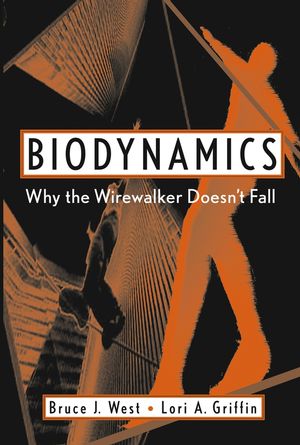Biodynamics: Why the Wirewalker Doesn't FallISBN: 978-0-471-34619-7
Hardcover
456 pages
December 2003
 This is a Print-on-Demand title. It will be printed specifically to fill your order. Please allow an additional 15-20 days delivery time. The book is not returnable.
|
||||||
You can never step in the same river twice, goes the old adage of
philosophy. An observation on the transitory nature of fluids in
motion, this saying also describes the endless variations
researchers face when studying human movement. Understanding these
biodynamics-why the wirewalker doesn't fall-requires a grasp of the
constant fluctuations and fine tunings which maintain balance in
the complex, fluid system of human locomotion.
Taking a comprehensive approach to the phenomenon of locomotion, Biodynamics: Why the Wirewalker Doesn't Fall integrates physical laws and principles with concepts of fractals, chaos, and randomness. In so doing, it formulates a description of both the large-scale, smooth aspects of locomotion and the more minute, randomized mechanisms of this physiological process.
Ideal for beginners in this subject, Biodynamics provides an elegant explanation without assuming the reader's understanding of complex physical principles or mathematical equations. Chapter topics include:
* Dimensions, measurement, and scaling
* Mechanics and dynamics
* Biometrics
* Conservation of momentum
* Biomechanics
* Bioelectricity
* Bioenergetics
* Fluid mechanics and dynamics
* Data analysis
* Biostatistics
Packed with problem sets, examples, and original line drawings, Biodynamics is an invaluable text for advanced undergraduates, graduate students, and instructors in medicine, biology, physiology, biophysics, and bioengineering.
Taking a comprehensive approach to the phenomenon of locomotion, Biodynamics: Why the Wirewalker Doesn't Fall integrates physical laws and principles with concepts of fractals, chaos, and randomness. In so doing, it formulates a description of both the large-scale, smooth aspects of locomotion and the more minute, randomized mechanisms of this physiological process.
Ideal for beginners in this subject, Biodynamics provides an elegant explanation without assuming the reader's understanding of complex physical principles or mathematical equations. Chapter topics include:
* Dimensions, measurement, and scaling
* Mechanics and dynamics
* Biometrics
* Conservation of momentum
* Biomechanics
* Bioelectricity
* Bioenergetics
* Fluid mechanics and dynamics
* Data analysis
* Biostatistics
Packed with problem sets, examples, and original line drawings, Biodynamics is an invaluable text for advanced undergraduates, graduate students, and instructors in medicine, biology, physiology, biophysics, and bioengineering.



